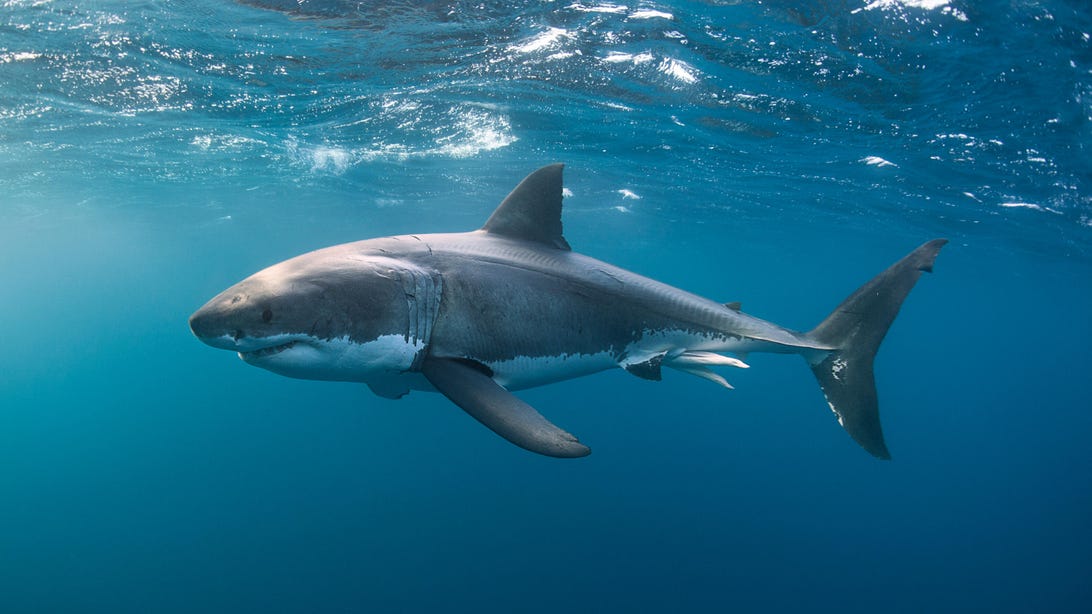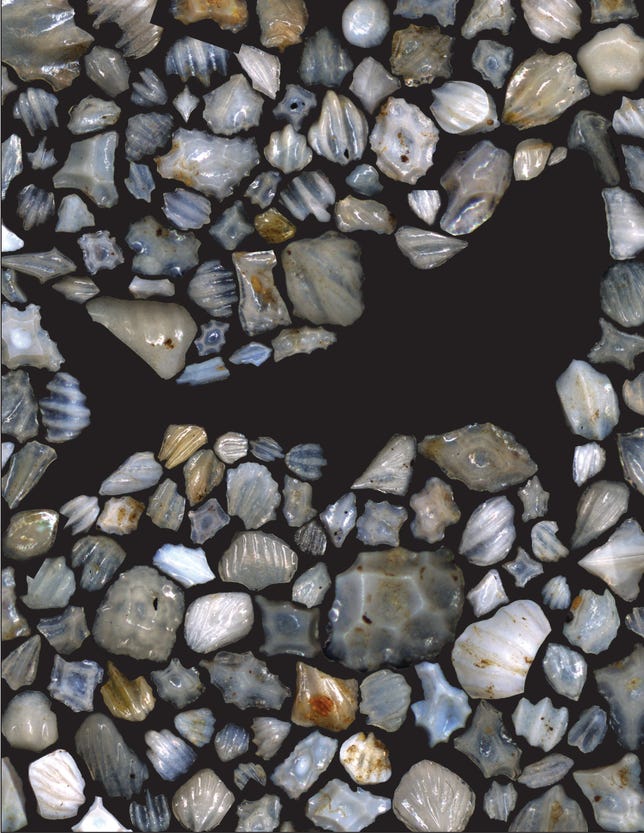Mysterious extinction event nearly wiped sharks out 19 million years ago

A previously unknown extinction event caused shark populations to collapse 19 million years ago.
GettyWhen Earth's temperatures spiked and oxygen levels in the ocean plummeted some 252 million years ago, most life on the planet was doomed. Some estimates suggest the extinction event, a mass extinction known as the Great Dying, killed off up to 70% of all land species but marine animals felt the impact even greater. As much as 96% of all species in the world's oceans perished.
But not sharks. The slender prowlers of the deep persevered. "They're the ultimate survivors," says Elizabeth Sibert, a paleobiologist and oceanographer at Yale University. The next extinction event, at the end of the Triassic period, couldn't kill them off and neither could the asteroid that ended the reign of the dinosaurs some 66 million years ago.
The longevity of sharks is legendary but they may have come much closer to extinction than we once believed, according to a new study, published in the journal Science on Thursday. The research, led by Sibert, shows that a previously unknown extinction event pushed sharks to the brink 19 million years ago, leaving only about one in 10 sharks in the open ocean alive.
"Something happened that knocked out 90% of them overnight," Sibert says. What that something was remains uncertain, but it was definitely devastating. The asteroid that wiped out the dinosaurs resulted in the extinction of just 30 to 35% of all shark species -- this event was two to three times worse.
How did Sibert and her co-author Leah Rubin, a doctoral student at the State University of New York College of Environmental Science and Forestry, stumble upon this enigmatic marine die-off? It was a bit of a surprise, involving some deep-sea detective work and a mountain of microfossils.
Buried treasure
When a marine animal dies, its remains descend into the abyss, decomposing from whole creature to constituent parts. Tiny pieces of the fallen, like the scales present on a shark (denticles) and teeth from fish rain down upon the ocean floor and, over time, pile up in the sediment.
"The ocean floor is basically a graveyard for all of the life that's living anywhere in the water column," says Sibert.
Each denticle or tooth is like a tiny headstone. As they're embedded into the sediment, they leave a fossilized record of life. These fossils are known as "icthyoliths." And denticles don't just get subsumed by the sediment when a shark dies either. "They shed their denticles throughout their whole life," notes Rubin. "That makes them a really abundant fossil."
Extracting a cylindrical core of sediment allows scientists to analyze the types of icthyoliths embedded within -- giving them a good proxy for what the ocean ecosystem looked like across deep time. The deeper you dig, the further back in time you can travel.
The sediment cores used in the study come from two locations in the Pacific Ocean, one northern and one southern site, and cover a timescale of 40 million years. They were gathered from about 3.5 miles below the surface by the JOIDES Resolution, a research vessel that can drill into the seafloor.

A vast array of denticles discovered from deep sea sediment.
Leah RubinIt's no easy feat to analyze the icthyoliths within each core sample, however. The fragments are incredibly small, sometimes smaller than half the width of a human hair and they come in a dizzying, beautiful array of shapes and sizes.
Sibert would sift through dry sediment under a microscope and separate out the denticles for this project, a task she's become good at after picking almost 200,000 out of the ocean dirt in her studies. After isolating the denticles, it was Rubin's job to help identify and describe their characteristics, to differentiate them from each other.
The denticles glisten under light, radiating blues, muted greens and oranges, and are given names as descriptive as "Two Big Lobes" (for a denticle containing, well, two big lobes) to the more fanciful "Whale Blow" and "Wrinkly Kite." You can see a selection of them in the image to the right.
The denticles tell the story. There are almost 1,300 in the study, with 85 distinct geometric shapes. The majority of them described by Sibert and Rubin are from prior to 19 million years ago, with only a few dozen found in the sediment cores after that time. The denticles disappear... so what happened to the sharks?
Extinction X
The denticles show a decline in shark numbers and diversity around 19 million years ago but there's no obvious cause behind the event. "It really, truly is a mystery right now, we don't know what happened," says Sibert.
The key to solving the mystery will be understanding the period of time the sharks seemed to almost disappear. It's known as the "Miocene" and Sibert describes it as a "transition period" for the Earth. Around 15 million years before the sharks mysterious extinction event, Earth was slowly becoming an "ice house" planet and a permanent ice sheet was growing over Antarctica. Even so, the planet was still much warmer than it is today.
"If I showed you a map," Sibert says "you'd kind of recognize everything but overall it would look just a little bit off."
The oceans of the time weren't all that different to the oceans of today, though you wouldn't find things like tuna, swordfish or seabirds. Whales and dolphins were yet to evolve, too. Unfortunately, there's not a lot of high quality records of this time in the Earth's history -- scientists just haven't spent a lot of time looking at it and it also seems to be poorly preserved in the deep sea sediments collected by drilling programs.
So there's not a lot of evidence to catch the shark killer, so to speak, but there are avenues to investigate. Discovering Extinction X in this unremarkable period of the Earth's history is just the tip of the iceberg.
"This paper definitely offers a ton more questions than it offers answers," says Rubin.
Could there have been an environmental driving force that caused the shark's decline? It's hard to say. Carbon and oxygen levels don't show any unusual aberrations but scientists could use a lot more data around this time point. Did this occur across all the world's oceans and in other marine life? Sibert thinks this was a global event, but we need more records.
And what about other bodies of water? Lakes and coastal sediments might show a different phenomenon again. How did land animals fare during this time? Are there other chemical proxies that can tell us about what the environment was like for them?
Sibert even suggests a pathogen, like a virus, could be responsible for the decreasing numbers, though it would be much harder to show this was the case.
For Sibert, the extinction stands out. Given that sharks have been around for 400 million years or more, surviving multiple mass extinction events, she believes something really significant must have happened and the sharks may be a doorway to understanding bigger changes to the Earth system during the early Miocene. "There's more data waiting to be found," says Rubin.
One of the major concerning aspects is that populations never really had a chance to bounce back from this event. Finding this history in the fossil record highlights the fragility or the marine environment and how difficult it can be for species to recover when they are pushed to the brink of extinction.
"The biology is trying to tell us something, and I think we need to listen," says Sibert.
By accepting you will be accessing a service provided by a third-party external to https://oc3anclub.com/

